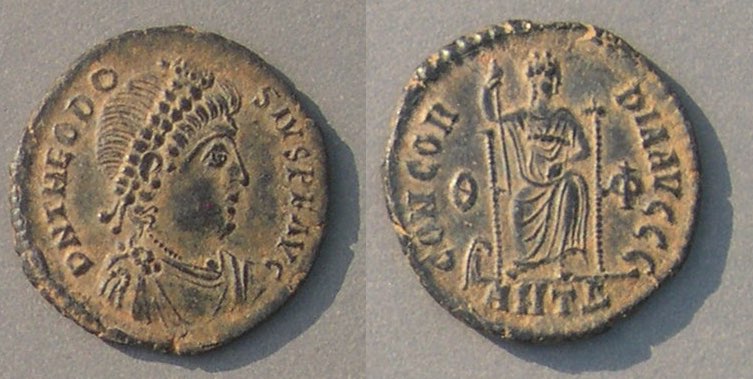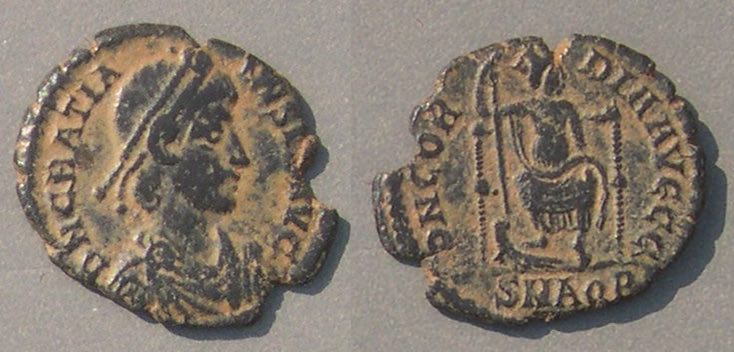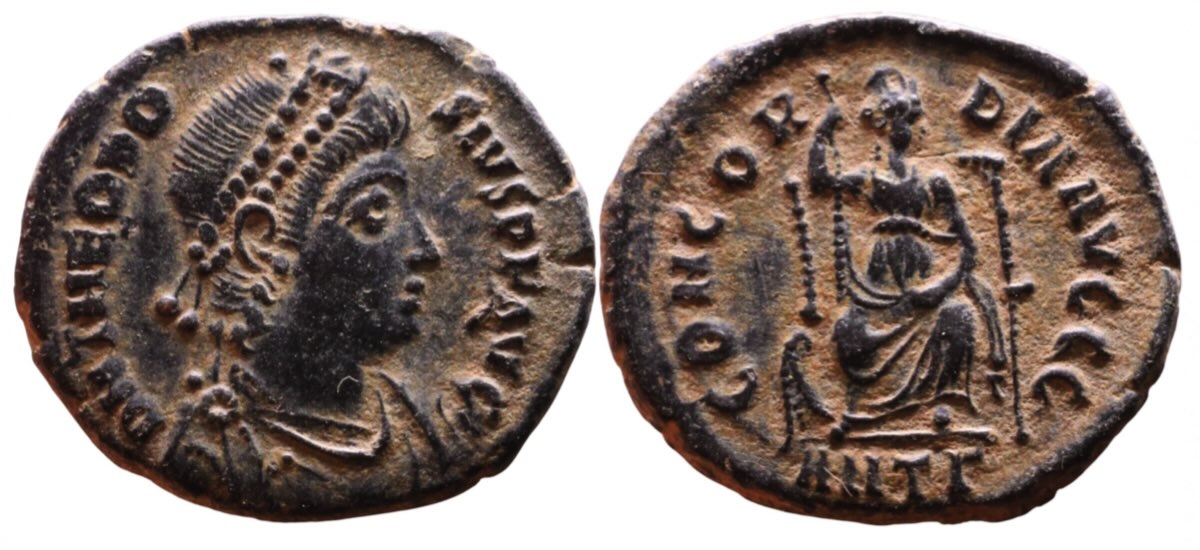Type 17: AE3. CONCORDIA AVGGG
Constantinopolis seated facing, head right, holding sceptre, not holding a globe, her right foot on prow and her left knee forward.
378-383
Types 15 and 16 are very similar to this type. If there is a globe left, it is Type 15. If there is a globe right, it is Type 16. Type 17 has no globe.
Type 17 is a scarce type of Theodosius. It was also rarely struck for Gratian.

Theodosius
18 mm. 2.53 grams.
RIC Antioch 44b, "S" struck 378-383
An AE3 for Gratian:
 Gratian
Gratian
19-17 mm. 2.12 grams.
SMAQP
RIC Aquileia 33a
| Mint |
RIC # |
G |
T |
| Trier |
67 |
-- |
R2 |
| Arles |
21 |
-- |
S |
| Aquileia |
33 |
R |
S |
| Rome |
45 |
R3 |
R |
| Thessalonica |
38 |
-- |
R2 |
| Cyzicus |
16 |
-- |
R4 |
| Nicomedia |
29 |
-- |
S |
| Antioch |
44 |
-- |
C |
RIC illustrations: RIC Ant 44, plate T-XIV.9, and Nic 29 plate T-XVI.2, has the figure with no globe and her left hand on her knee, "turretted" or "head right." They call it Constantinopolis because of the prow.
Note: The first version of this website had this type listed as AE4, only from Trier, and extremely rare (R4), illustrated as very small (14 mm) on plate III.16. I think there was a mistake in RIC because these coins from other mints have this reverse design as an AE3. Their example looks official, not imitation, but a type which is "R4" from a single mint can not be a main issue. Perhaps they saw only a photo and the wrong size was associated with the photo.
Cayon --. Hunter --.
 Theodosius
Theodosius
18.4-16.4 mm. 2.43 grams.
RIC Antioch 44a1, page 284. with different field marks than the Theodosius example above.
Return to the main page.

 Gratian
Gratian